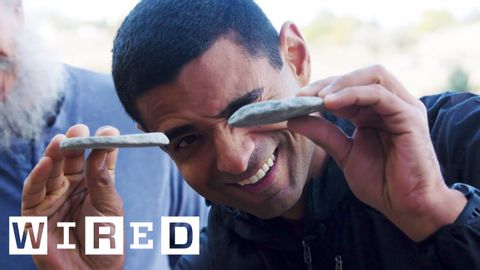世界記録保持者に聞く「水切り」88回のコツ | Almost Impossible | WIRED.jp (世界記録保持者に聞く「水切り」88回のコツ | Almost Impossible | WIRED.jp)
 沒有此條件下的單字
沒有此條件下的單字US /ɪˈsenʃəli/
・
UK /ɪˈsenʃəli/
- adv.本質上 ; 本來 ; 實質上;本質上;實際上
- v.t./i.出現;估計;我認為〜;認為
- n.身影;(計算過的)數量;肖像;圖;形狀;人物;名人;人影;數字
US /ˈslaɪtli/
・
UK /ˈslaɪtli/
